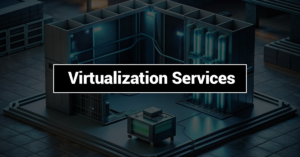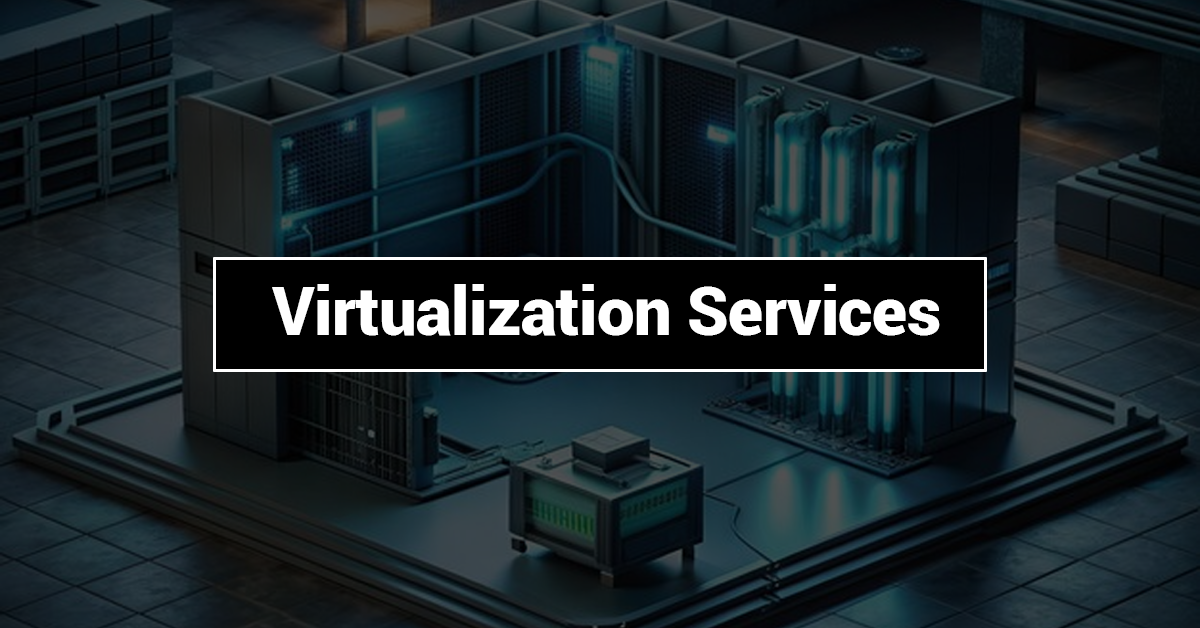
Analyzing various technologies that hold solid positions and rapidly grow in the IT industry, server virtualization is one of the significant components of contemporary IT infrastructures. This technology helps companies manage resources and reduce the costs necessary to meet emerging needs for IT Infrastructure and outsourcing. Thus, it cannot be considered a mere trend but rather an essential factor contributing to the development of the digital revolution and offering companies a set of tools when high levels of competition characterize the industry.
What do virtualization services include?
The same includes replicating hardware such as servers, storage, and networks. It allows the optimal use of resources and makes it possible to have more than one operating system and several applications on one physical server. Benefits include utilization, versatility, and economy, which are crucial in the dynamic business world.
How do Virtualization Services Distinguish Themselves from Traditional IT Approaches?
Complex, inflexible systems burden old IT infrastructures by extending every server or application. This is in contrast to virtualization, which enables running multiple virtual operating systems on one host and, therefore, does not use much hardware. It also reduces operational costs and system delivery and management.
Advantages of Virtualization Services:

-
Cost Savings:
It reduces dependency on costly hardware by enabling systems to operate on standard equipment. This implies low initial capital investment and low maintenance and energy costs later. Its primary use and benefit is that it is more resourceful than physical servers, thereby often avoiding the investment of new hardware.
-
Scalability:
The business owners can effectively align the resources according to the business's needs. These resources can be accumulated or expanded quickly without additional costs or delays depending on specific business requirements. This is especially true for companies that grow or experience business changes yearly.
-
Improved
Disaster Recovery: The service allows quick recovery of a system that has crashed or erased data, rotation schedules for backups, and restores of virtual machines. Other features include taking semi-automated snapshots and automating the backup process to enhance recoverability.
-
Enhanced Security:
It identifies and separates impacted and unaffected equipment, supplies, or turntables to prevent downtime. The IT virtualization team can manage security issues, setting up security parameters to limit traffic and minimize the chance of cyber attacks. Secure networks and protection mechanisms like VA and firewalls enhance security mechanisms.
-
Simplified Management:
System integration derived from centralized control minimizes monitoring requirements. This illustration makes sense because it is easier to coordinate the virtual setting from a single console and perform administrative tasks. Regular software updates and patches help keep systems secure and current.
-
Resource Optimization:
Optimized available hardware can help achieve Potential efficiency. Virtualization solutions make it easier to allocate and balance the resources from the physical host with other virtual machines, enhancing system performance. This optimization aims to maximize the use of hardware investment and avoid cases where the investment is overused.
-
Environmentally Friendly:
Using more efficient systems and equipment and implementing energy-saving measures contradict the low energy intensity and carbon footprint objective. Combining numerous systems on a single physical framework reduces power and cooling consumption in virtualization. It also helps achieve a sustainable environment for the IT infrastructure.
The Consequence of Essential Virtual Office Services

Virtualization is one of the critical elements operating in virtual office services. It can facilitate the smooth running of a business entity without the need for an actual commercial building. The procedure uplifts services like Virtual Office Business Addresses, Mail Management and Forwarding, and Telephone Answering mechanical administrations. This technology offers customization and analysis and implements cost-savings, making it suitable for IT infrastructure while projecting a work-oriented vision.
Virtual office services play an essential role for any company that seeks to set a robust business image and corporate identity while preceding the costs associated with leasing/owning space for a conventional commercial office. These services allow these processes for employees to work remotely from the office while accessing organizational resources.
Virtualization and Virtual Assistants
Remember that virtualization services are essential for virtual assistants and should not be considered optional additions. They enable virtual assistant services to access the necessary tools and resources and guarantee data security. As a result of virtualization, businesses can incorporate the virtual assistant into the business environment without compromising on Security and other organizational frameworks for effective organizational collaborations.
Virtual desktops and applications help virtual assistants by allowing access to the software and documents needed to complete a specific project. This setup enhances productivity and enables virtual assistants to work effectively with teams regardless of their physical location.
How Fusion Factor Customizes Virtualization Services
At Fusion Factor, we acknowledge that every business has its requirements and specifications. You will get personalized virtualization solutions, including full virtual offices, virtual assistants, and high-security solutions for virtual accounting services. We offer flexibility and Security that aim to accomplish the goals of your company's transformation into a digital environment.
Our strategy involves evaluating your business context to design unique solutions. Our solutions must fit within your working model and offer the required backing for a successful implementation.
Future Trends in Virtualization
New-age technologies such as containers, edge computing, and HCI are defining the future of the same. These advancements give more flexibility, scalability, and efficiency in using resources where they are required.
Thus, containerization provides lightweight and portable application settings, and edge computing focuses on processing near the data sources for increased speed. Integrating the storage, computing, and networking systems in HCI improves performance.
Preparing for the Future
Business owners can acquire versatile virtualization tools capable of addressing technological changes. When sourcing for a service provider, ensure your IT infrastructure is up-to-date, secure, and ready to incorporate new technologies. Furthermore, it is vital to invest in training its employees to enhance the staff's ability to utilize this service fully.
Working with a knowledgeable IT service provider ensures that your virtualization plan is adaptable to future advancements. Instruction, innovation, and training ensure that individuals and organizations remain relevant in the ever-evolving technological world.
Virtualization has evolved as a technology trend and a business enabler in implementing cost-effective IT solutions for large-scale business continuity. That is why it gives businesses means to address such concerns as utilization of resources, protection, and streamlining while promoting sustainable development and enabling virtual office solutions. With more organizations now adopting it to sustain competitive positions, it is relevant to consider the elements of the subsequent trends comprising containerization, edge computing, and HCI.
Partnering with companies like Fusion Factor enables organizations to develop effective virtualization strategies that align with new advancements, helping them achieve long-term goals in areas undergoing significant digital transformation.


